When you think of a fashion capital, you might picture glossy runway shows, with supermodels or celebrities in the front row. And yes, that’s part of it. But fashion capitals are so much more. They’re the places where culture, creativity, and community all collide, influencing what people wear not just locally, but worldwide.
At Remitly, we understand how exploring local fashion can be a fun way to feel connected in a new place, so we’ve put together this guide to the world’s fashion capitals, from Parisian chic to Tokyo streetwear.
The origins of fashion capitals
It helps to understand where the concept of “fashion capitals” comes from. Fashion has always had a cultural center, and those centers have shifted over time.
How Paris set the stage
In the 17th century, the French royal court was obsessed with appearances. Clothing was more than fabric, it was power, politics, and status. Paris quickly became the place where trends were born and exported.
Over the years, this foundation evolved into haute couture, with designers like Charles Frederick Worth shaping the modern fashion industry. Paris’s influence cemented it as the original fashion capital.
The rise of Milan, New York, and London
By the 20th century, other cities were stepping up. Milan rose as an industrial hub where craftsmanship met luxury production. New York became the commercial fashion powerhouse, thanks to its garment industry and immigrant creativity. London, meanwhile, offered something different: tradition mixed with rebellion, from Savile Row tailoring to punk fashion.
Each city built its own unique fashion identity, but all shared one thing: the ability to shape style far beyond their borders.
Expanding into Asia and beyond
In recent decades, the fashion world has widened. Tokyo brought avant-garde design and experimental street style to the global stage. Seoul has become a hotbed of K-fashion thanks to K-pop’s global rise. And cities like Lagos and Mexico City are proving that fashion is no longer dictated by Europe alone.
Paris: The timeless queen of fashion
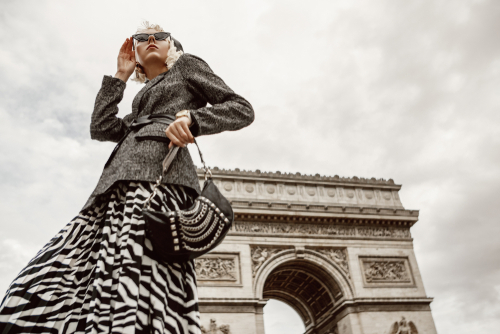
When people talk about fashion capitals, Paris almost always comes first. It’s not just a city; it’s a whole mood, where history, culture, and couture blend together on every cobblestoned street.
A legacy of couture
Paris didn’t stumble into fashion greatness; it built it. Back in the days of French royalty, clothing was a political statement, and Paris was where trends were born. That heritage grew into haute couture, making Paris the birthplace of luxury fashion.
Over the years, designers like Coco Chanel, Christian Dior, and Yves Saint Laurent put Paris firmly on the style map. Today, brands like Louis Vuitton, Hermès, and Givenchy continue to make Paris a powerhouse, drawing visitors and fashion students from around the globe.
Paris Fashion Week prestige
Twice a year, the city transforms into a global stage for Paris Fashion Week. Designers use the event to showcase their most daring ideas, while celebrities, journalists, and influencers turn the streets into a runway of their own.
Even if you’re not inside the shows, being in Paris during fashion week is electric. Sidewalk cafés near venues become prime spots for people-watching; you might spot trends before they hit the rest of the world.
Parisian street style and lifestyle
Parisians are famous for their effortless chic, the kind of style that looks natural but is actually very intentional. Think jeans with a blazer, a silk scarf, and sneakers that somehow look elegant. It’s about investing in timeless pieces instead of chasing every trend.
For newcomers, it can feel intimidating to dress “Parisian,” but the real lesson is confidence. Parisian style is less about labels and more about the attitude you bring to what you wear.
Practical tips for visitors
Paris is a playground for fashion lovers, no matter your budget. Head to Avenue Montaigne and Champs-Élysées for iconic luxury boutiques, or explore Le Marais for vintage shops and indie designers.
If you want more than shopping, visit the Musée des Arts Décoratifs for rotating exhibitions, or spend a Saturday at Marché aux Puces de Saint-Ouen, the city’s best flea market. You’ll find treasures at every price point, making fashion in Paris accessible to everyone.
Milan: Italy’s industrial fashion powerhouse
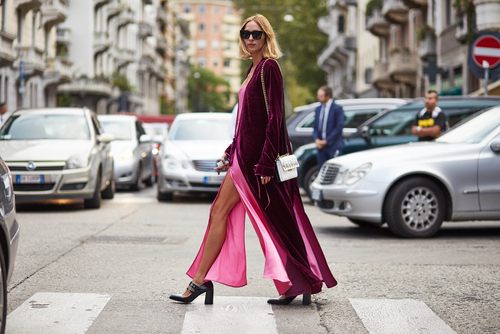
Milan may not have Paris’s centuries-old fashion history, but it’s built a reputation on something equally important: quality. The city thrives on Italian craftsmanship, textiles, and tailoring, making it a global hub for luxury fashion.
Italian craftsmanship and luxury
Italian design is known for its attention to detail and artistry. From leather goods to perfectly cut suits, Milan showcases the best of Italian skill.
Fashion houses like Prada, Versace, and Armani call Milan home, blending classic tailoring with bold, modern aesthetics. That mix has helped define Milan as a capital where tradition and innovation walk hand in hand.
Milan Fashion Week focus
Milan Fashion Week is one of the “big four,” but its vibe is a little different. While Paris leans into artistry, Milan emphasizes ready-to-wear collections, clothes meant to actually be worn beyond the runway.
For buyers and press, this makes Milan crucial. The collections shown here often influence what you’ll see in stores worldwide. For locals, it means fashion feels a bit more approachable and connected to daily life.
The Quadrilatero della Moda
Milan’s Quadrilatero della Moda, or Fashion Quadrilateral, is a must-visit for anyone passionate about style. This district is lined with luxury boutiques and showrooms that showcase Italian excellence.
Even if you’re window-shopping, it’s worth strolling through the area. The streets are filled with Milanese professionals who somehow make business attire look effortlessly stylish.
New York: The commercial fashion hub
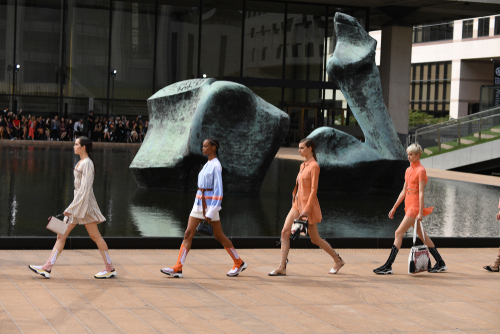
New York is loud, fast, and constantly moving, and its fashion scene reflects that energy. It’s the city where trends are born on the subway as much as on the runway.
Rise of America’s fashion center
The roots of New York fashion lie in the Garment District, where immigrant workers helped build the city’s clothing industry. That foundation turned New York into a place where creativity and entrepreneurship met.
Influence of American designers
American fashion is all about accessibility and diversity. Designers like Ralph Lauren, Marc Jacobs, and Tommy Hilfiger helped define the American look: practical, stylish, and wearable. New York also embraces streetwear and emerging brands, making it a city where both high fashion and casual looks thrive side by side.
New York Fashion Week
New York Fashion Week was groundbreaking in making fashion more inclusive and public. Today, it remains a highlight on the global calendar, showcasing not just established names but also fresh talent.
Outside the shows, the real spectacle happens on the sidewalks. Photographers and influencers capture street style that often becomes just as influential as what’s on the runways.
London: Where tradition meets rebellion
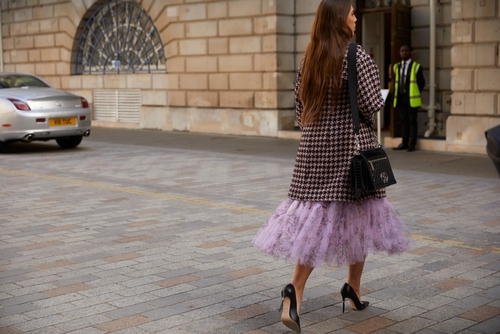
London thrives on contradictions; it’s refined and rebellious all at once. That balance makes it one of the most exciting fashion capitals in the world.
From tailoring to punk movements
London has deep roots in traditional tailoring, especially on Savile Row, where some of the world’s finest suits are made. But it also has a wild side.
In the 1970s, London became the birthplace of punk fashion, with ripped jeans, safety pins, and bold hairstyles redefining style. That rebellious streak still influences the city’s fashion today.
British designers shaping fashion
Some of fashion’s most iconic designers hail from London. Vivienne Westwood brought punk to the runway, Alexander McQueen redefined avant-garde design, and Burberry continues to blend heritage with innovation.
While Paris and Milan lean toward luxury, London Fashion Week is famous for championing emerging talent. Young designers use the platform to showcase bold, experimental ideas. That fresh energy makes London a breeding ground for innovation, and often where tomorrow’s biggest names are first discovered.
Subcultures and youth fashion
London has long been shaped by subcultures. From mods and goths to streetwear and grime culture, the city’s youth movements have always influenced global trends. Take a walk through Camden or Shoreditch, and you’ll see firsthand how subculture still thrives on the streets of London.
Tokyo: Asia’s creative fashion laboratory
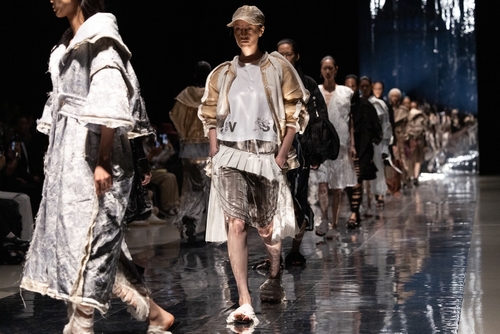
Tokyo is a city of contrasts, minimalism meets maximalism, tradition meets futurism. Its fashion scene reflects that same dynamic energy.
Global influence of Japanese designers
Designers like Yohji Yamamoto, Rei Kawakubo (Comme des Garçons), and Issey Miyake reshaped global fashion. Their avant-garde designs challenged Western norms and introduced entirely new ways of thinking about clothing. Their influence continues today, with Japanese aesthetics inspiring everything from luxury runways to everyday streetwear.
Tokyo Fashion Week
Tokyo Fashion Week is where you’ll see some of the most innovative collections on the planet. It’s not afraid to experiment, blending fashion with art and technology. The shows may not be as widely covered as Paris or Milan, but they’re closely watched by insiders looking for the next big idea.
Street style cultures
Tokyo is the ultimate playground for street style. Harajuku is known for colorful, cosplay-inspired looks. Shibuya captures the city’s youth trends, while Omotesando leans toward sleek, minimalist fashion. These neighborhoods offer a living fashion show, where everyday people express themselves with bold creativity.
Other emerging fashion capitals to watch
Fashion isn’t limited to the big five. Around the world, new capitals are making waves and shaping the future of style.
Seoul: K-fashion’s global rise
Fueled by the global popularity of K-pop and K-dramas, Seoul’s fashion scene has exploded. Its youthful, fast-moving style has gained international recognition. Brands like Gentle Monster and pushBUTTON are putting Korea firmly on the fashion map, proving Seoul is more than just a passing trend.
Copenhagen: Sustainability and Scandi chic
Copenhagen has become a leader in sustainable fashion. Its designers focus on eco-friendly materials and minimalist Scandinavian aesthetics. The city’s approach is influencing global conversations about how fashion can be stylish and responsible.
Lagos: Africa’s vibrant style hub
Lagos Fashion Week is spotlighting African designers like Lisa Folawiyo and Orange Culture. Their bold prints and innovative designs are gaining global attention. Lagos is proving that African fashion deserves a prominent place on the global stage.
Fashion capitals on a budget
Fashion can feel expensive, but every city has affordable ways to experience it. Whether it’s thrifting, street markets, or just people-watching, you don’t need a runway budget to join in.
Thrift stores and vintage shopping
Some of the best finds are secondhand. In New York, Beacon’s Closet is legendary. In London, head to Brick Lane Vintage. Paris offers Kilo Shop, where clothes are sold by weight. Thrifting not only saves money but also connects you with a city’s unique fashion history.
Street markets and outlet malls
Markets and outlets are another great option. Tokyo’s Shimokitazawa neighborhood is packed with vintage shops, while outlet malls outside Milan offer designer goods at a fraction of the price. These spots are ideal for budget-conscious fashion lovers who still want quality and style.
The digital future of fashion capitals
Fashion is evolving with technology. The future of fashion capitals will look different than the past.
Social media and influencers
Platforms like Instagram and TikTok are reshaping how we discover trends. Influencers and micro-creators are now just as important as designers in setting what’s “in.” This shift means anyone, anywhere, can influence global style, not just people in Paris or New York.
Virtual fashion weeks and digital couture
Some fashion weeks now stream entirely online, and brands are experimenting with digital-only clothing. It’s part of the rise of virtual fashion, where garments exist purely for digital spaces. This is opening up access for more people while pushing the boundaries of creativity.
Global accessibility to style
The beauty of digital fashion is accessibility. You don’t need to travel to Paris to see Paris Fashion Week; you can stream it. This inclusivity is changing how we define fashion capitals, making the industry more global than ever.
Fashion’s global stage continues to evolve
From Paris’s timeless couture to Tokyo’s boundary-pushing streetwear, each fashion capital adds something unique to the global style conversation. But the stage is widening, cities like Seoul, Lagos, and Copenhagen are proving that fashion isn’t just about tradition, it’s about innovation and inclusion.
For immigrants, fashion can be more than clothes; it’s a way to connect with a new culture, discover local communities, and express yourself in a new chapter of life.
As you explore new places and settle into life abroad, know that Remitly is here to help make the transition smoother, so you can focus on building a future that feels as confident and stylish as you are.
How Does Dubai’s Unique Urban Design Influence Its Role as a Global Fashion Capital?
Dubai’s urban design, marked by innovative architecture and strategic layouts, plays a crucial role in shaping its fashion landscape. With designer boutiques nestled among futuristic skyscrapers, the city attracts global brands and trendsetters. Thus, exploring the manmade origins of dubai city reveals how this vision cultivates a vibrant fashion scene.
FAQ
Which fashion capital is best for emerging designers?
London and Tokyo are known for nurturing fresh talent. Both cities thrive on experimentation and provide platforms for new voices.
How do fashion weeks in different capitals compare?
Paris is all about couture, Milan focuses on ready-to-wear, New York emphasizes commercial appeal, London highlights experimental talent, and Tokyo blends avant-garde with street style.
What makes Paris different from other fashion capitals?
Paris has the deepest history and the most prestigious haute couture houses. Its reputation as the birthplace of fashion gives it unmatched influence.
Are there new fashion capitals emerging globally?
Yes. Seoul, Copenhagen, Lagos, São Paulo, and Mexico City are all gaining recognition as important style hubs.